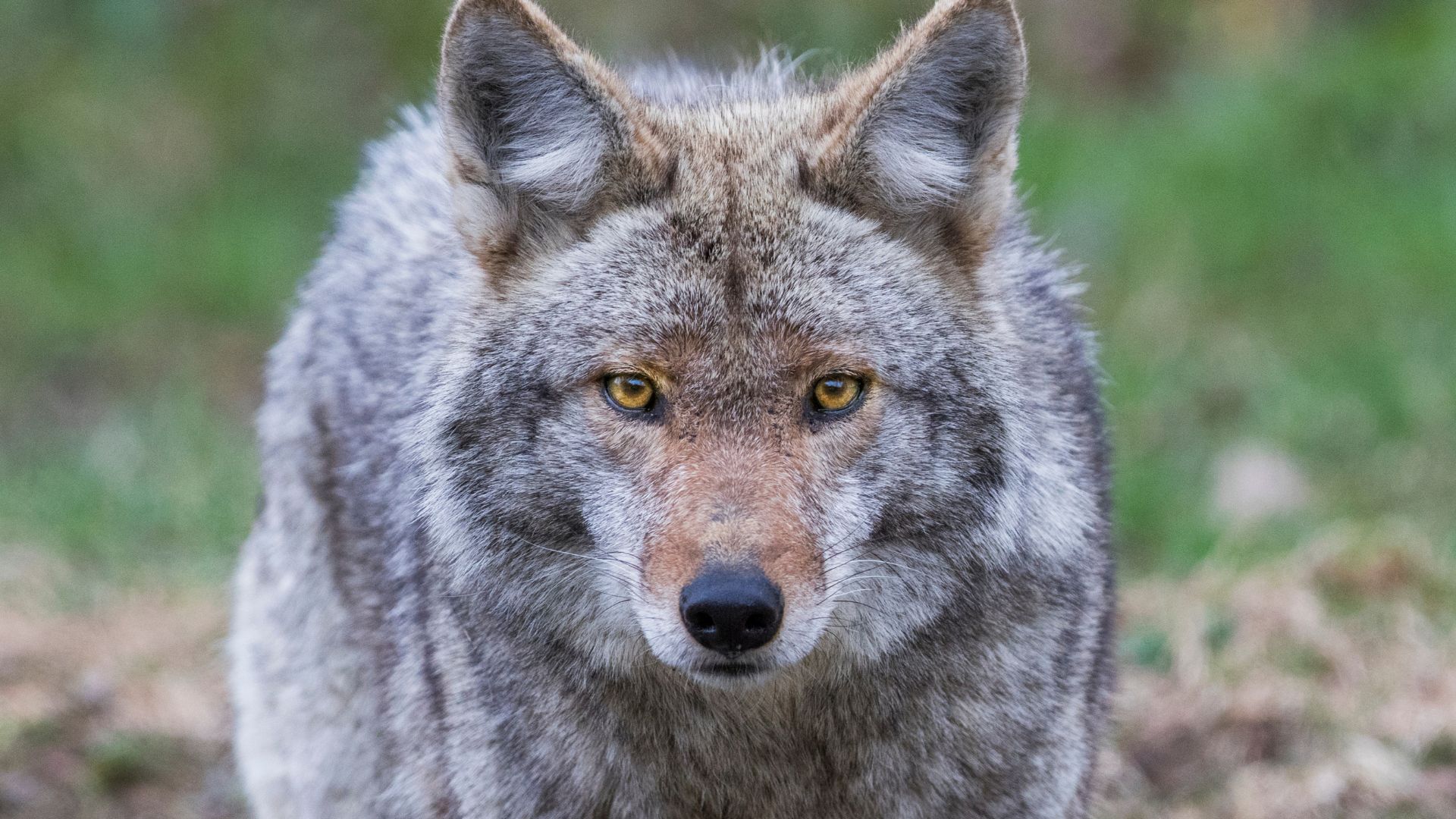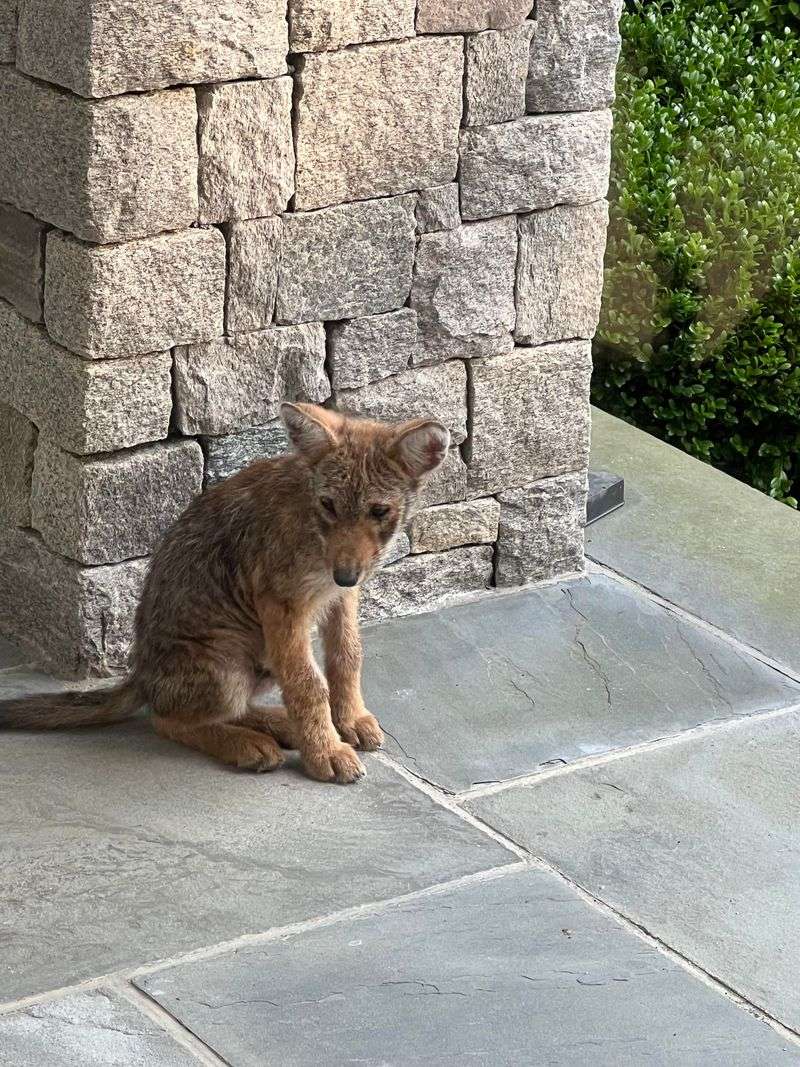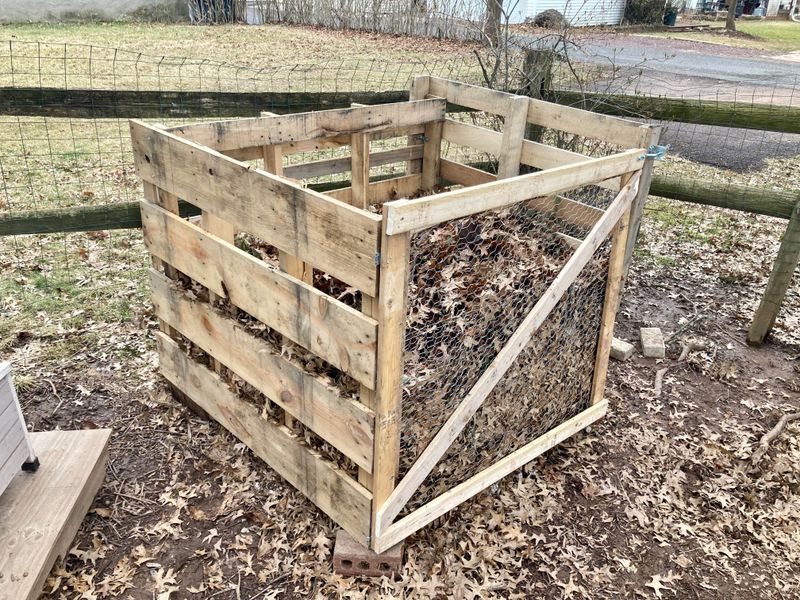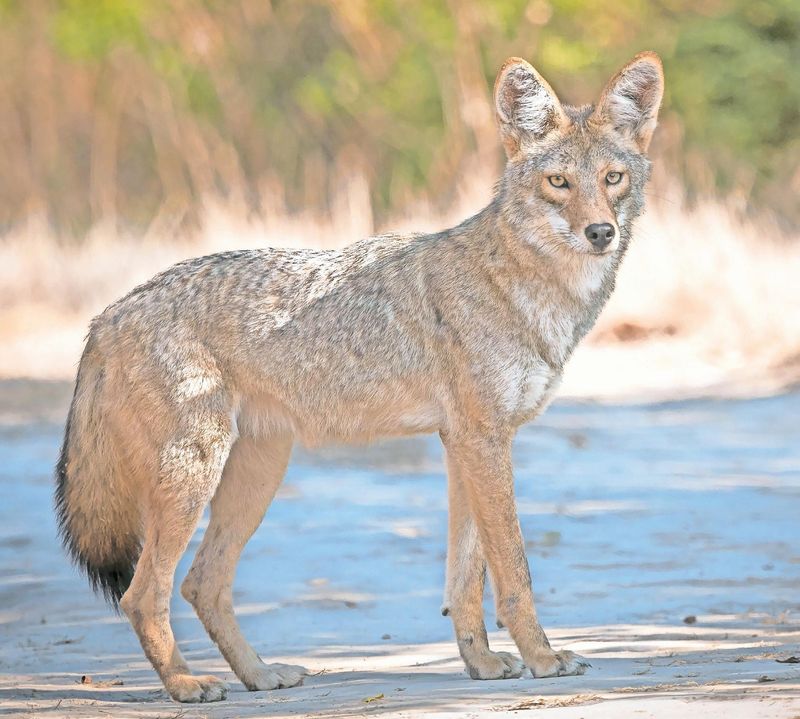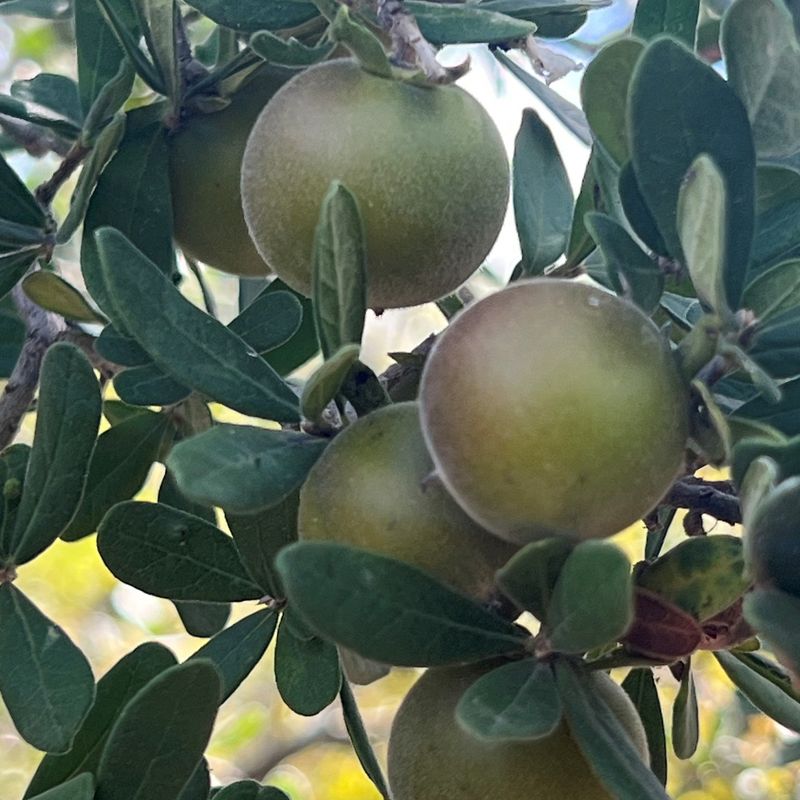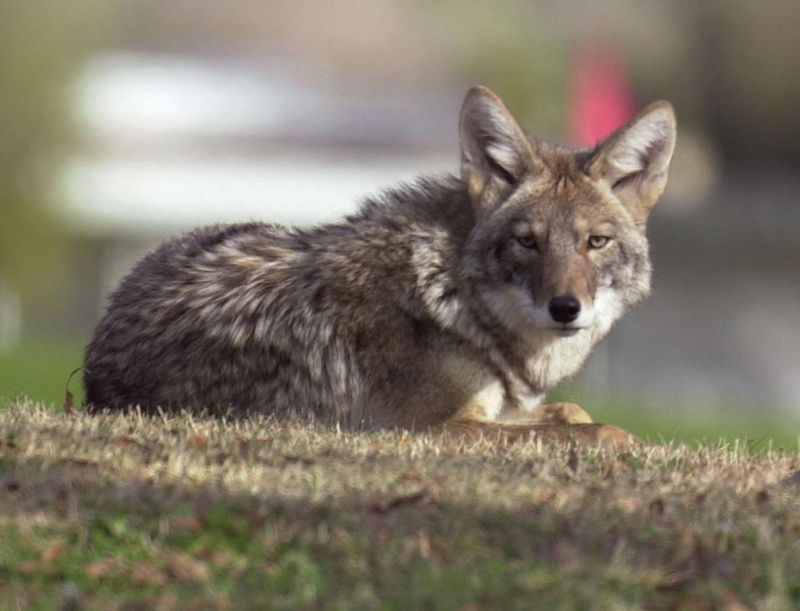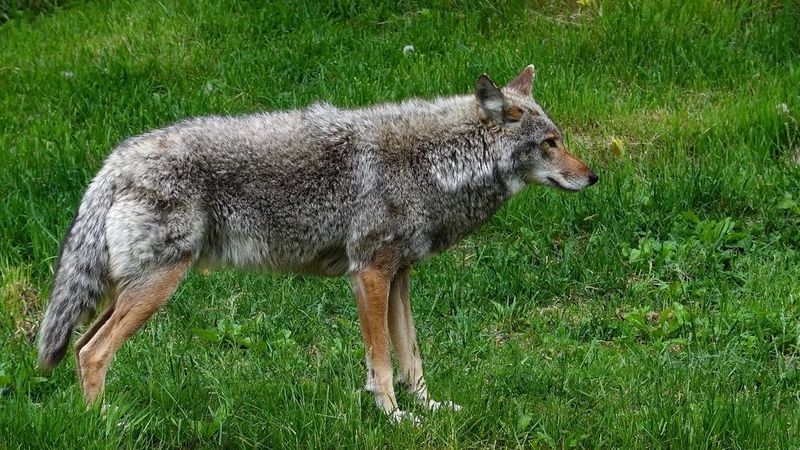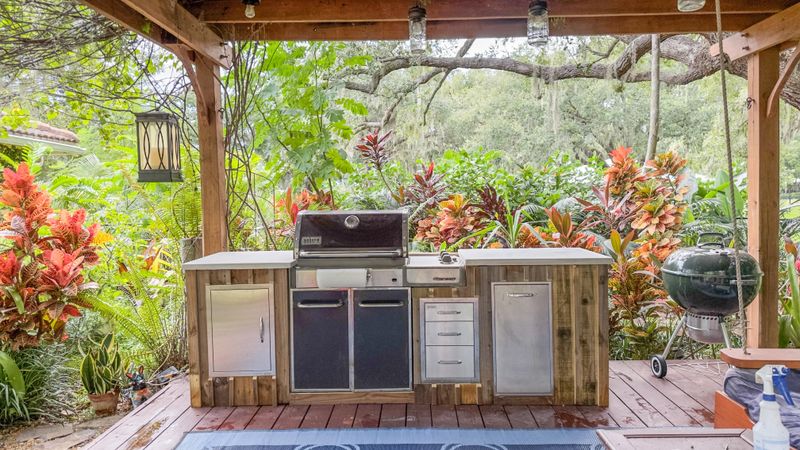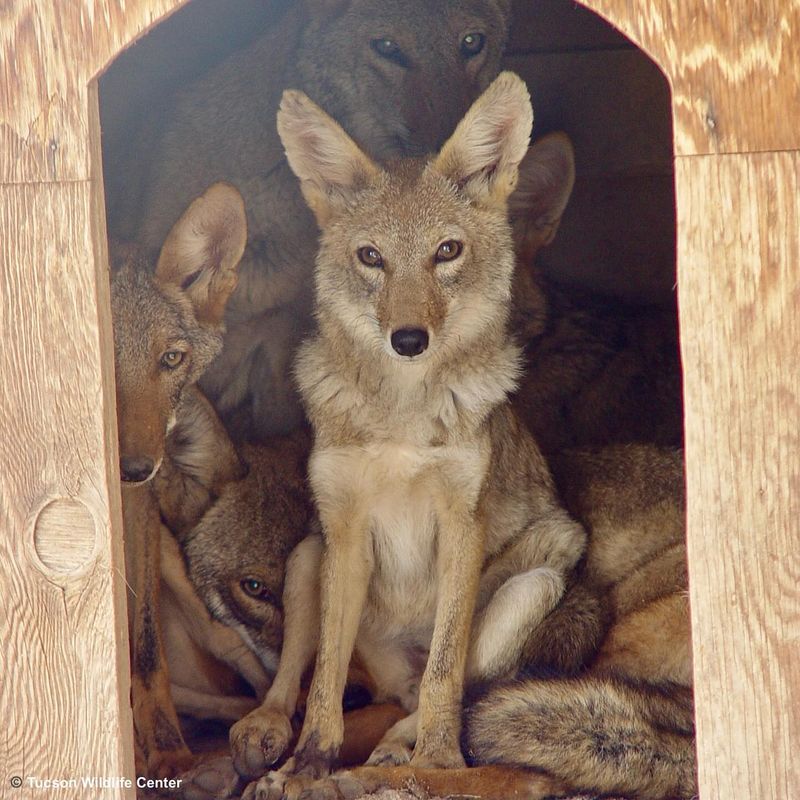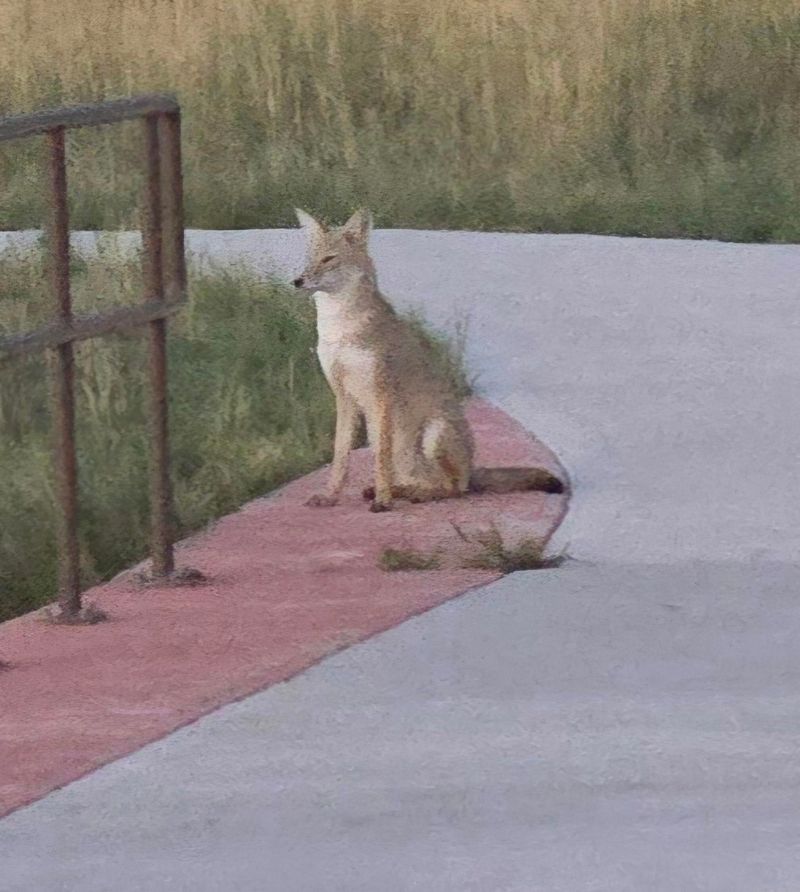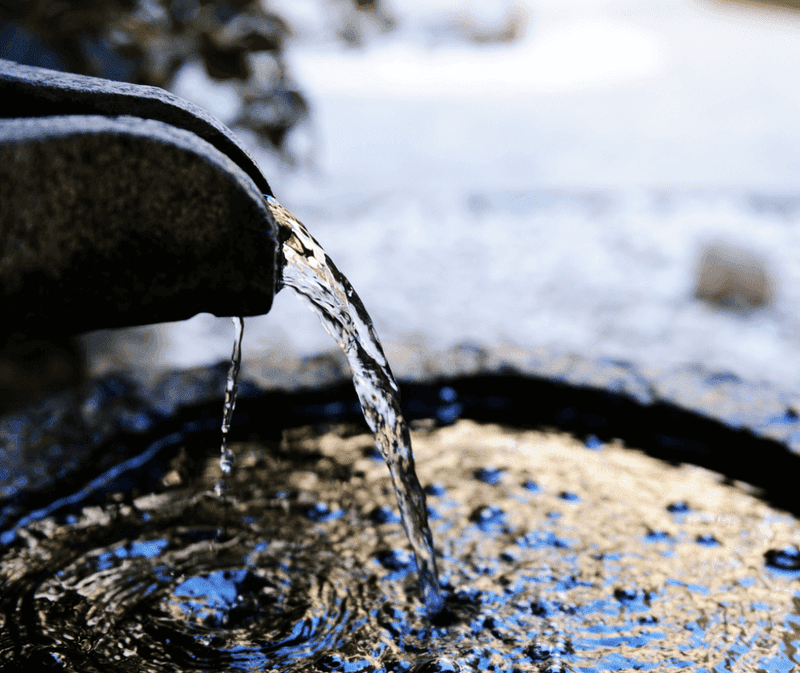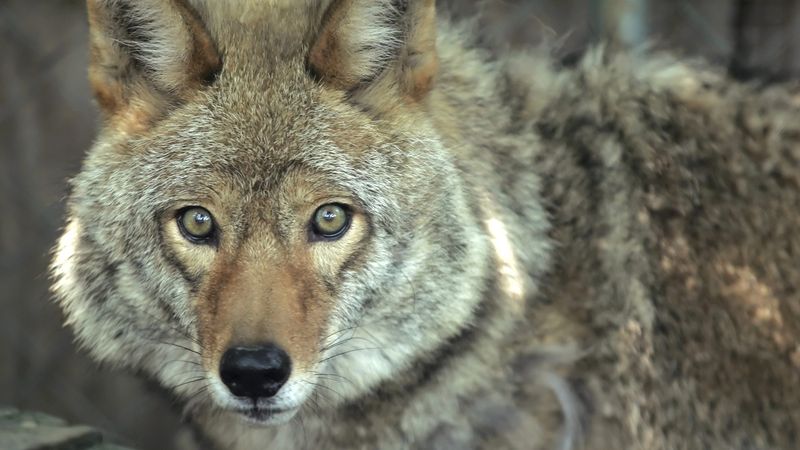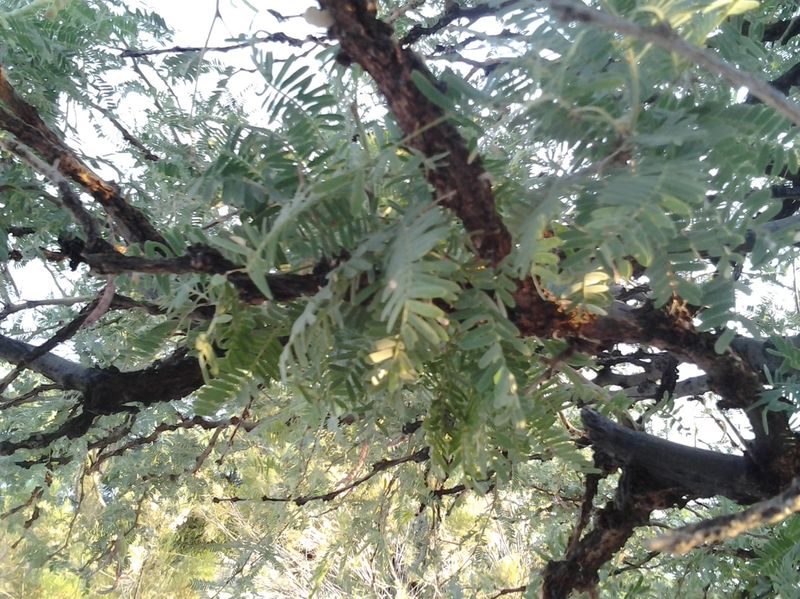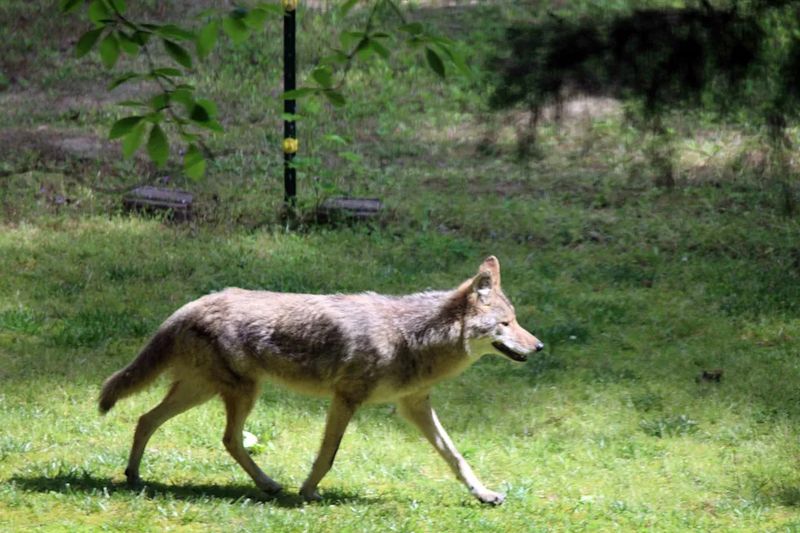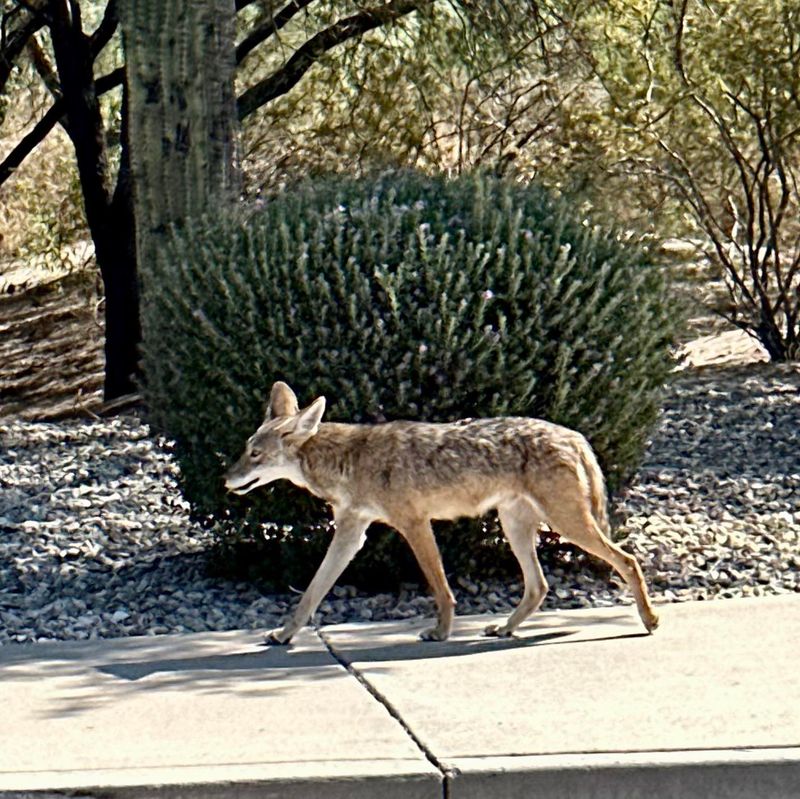In Arizona’s growing suburbs, it’s not uncommon to share the landscape with wildlife—especially coyotes. These smart, adaptable creatures are becoming regular visitors, blending into neighborhoods as easily as they do desert terrain.
With their incredible sense of smell, coyotes can detect food sources from surprising distances. Even small scraps or pet food left out can act like open invitations, drawing them closer to homes than we’d like.
While coyotes usually steer clear of people, certain scents can override their caution. Learning what attracts them is key—it’s the first step in keeping these curious guests at a safe, respectful distance.
1. Garbage And Food Waste
The pungent aroma of decomposing food scraps in outdoor trash cans might as well be a five-star restaurant advertisement for hungry coyotes. They’re particularly drawn to meat remnants and greasy containers.
During summer months in Phoenix suburbs, the heat intensifies these smells, spreading them farther into surrounding desert areas. I’ve noticed coyote activity increases in my neighborhood on trash collection eve.
Securing garbage in animal-proof containers and rinsing food packaging before disposal significantly reduces these attractive odors. Some residents freeze smelly waste until collection day to minimize the scent trail.
2. Pet Food Left Outdoors
Kibble and wet pet food emit strong protein-rich aromas that travel surprisingly far on desert breezes. Coyotes don’t distinguish between food meant for your pets and a free meal for themselves.
My neighbor in Scottsdale learned this lesson when she spotted a coyote licking her cat’s bowl clean at dawn. The feeding station had become a regular stop on the animal’s nightly rounds through our community.
Bringing pet dishes inside after feeding time prevents creating these scent lures. For those with outdoor cats, consider timed feeders that close when not in use to minimize lingering food smells.
3. Compost Piles
Backyard composting creates a bouquet of decomposing organic matter that coyotes find irresistible. Fruit scraps, vegetable peelings, and eggshells might seem innocuous to us, but they signal food source to wildlife.
Residents near the McDowell Mountain preserve frequently report coyotes investigating their garden areas. The animals seem particularly interested after fresh additions to compost bins.
Using enclosed compost tumblers rather than open piles helps contain these attractive scents. Adding a layer of dried leaves or soil after each deposit of kitchen scraps can also help mask the smell from curious canine noses.
4. BBQ Grill Residue
The smoky, meaty aroma lingering on grills after a weekend cookout is practically irresistible to coyotes. Grease drippings and food particles create powerful scent trails that can attract wildlife from surprising distances.
After hosting a neighborhood cookout last summer, I noticed paw prints circling my patio the next morning. The grill had been left uncleaned, and the scent had drawn a curious visitor overnight.
Thoroughly cleaning grills after use and storing drip pans indoors dramatically reduces these attractants. Some Arizona homeowners keep their grills in garages or covered patios when not in use as an extra precaution.
5. Fallen Fruit
Citrus trees are common in Arizona yards, and the sweet smell of rotting oranges, lemons, or grapefruits on the ground creates an aromatic beacon for coyotes. The fermentation process intensifies these fruity scents.
The sugar content in fallen fruit attracts insects, which in turn can attract coyotes looking for protein-rich snacks. This creates a double attraction that brings wildlife closer to homes.
Regular harvesting and prompt cleanup of fallen fruit helps eliminate this food source. Many community gardens in Tempe and Mesa organize neighborhood fruit gleaning to prevent waste and reduce wildlife attractions.
6. Small Pet Scents
Coyotes have evolved to detect the natural body odors, urine, and feces of small mammals – unfortunately including our beloved pets. The scent of rabbits, guinea pigs, or chickens kept outdoors can trigger predatory instincts.
A family in my Chandler neighborhood had recurring coyote visitors after setting up a rabbit hutch in their backyard. The predators were drawn by smells even though the rabbits were securely enclosed.
Housing small pets in secure, enclosed structures with solid bottoms prevents scent dispersal. Some suburban homeowners install motion-activated sprinklers around animal enclosures as an additional deterrent to approaching coyotes.
7. Garden Fertilizers
Many organic fertilizers contain bone meal, blood meal, or fish emulsion that smell deliciously protein-rich to coyote noses. These garden amendments mimic the scent of prey or carrion that would naturally attract wild canids.
The first time I used fish emulsion on my vegetable garden in north Phoenix, I was surprised to find distinctive paw prints throughout my carefully tended beds the next morning. The smell had drawn in curious wildlife overnight.
Switching to plant-based fertilizers or immediately watering in animal-based products helps minimize lingering odors. Some gardeners in coyote-prone areas cover newly fertilized beds with row covers for a few days after application.
8. Outdoor Cooking Smoke
The aromatic smoke from grilling, smoking meats, or cooking outdoors creates an airborne advertisement that travels far beyond your property lines. Coyotes associate these cooking smells with potential food opportunities.
During community cookouts at our Gilbert neighborhood park, we’ve noticed increased coyote sightings along the perimeter. The animals seem drawn by the concentrated food aromas wafting from multiple grills.
While you can’t eliminate cooking odors entirely, being vigilant about food scraps and cleanup helps reduce lingering attractants. Some residents use enclosed smokers rather than open grills when coyote activity is high in their area.
9. Birdseed And Scattered Feed
Bird feeders create zones of concentrated food smells as seeds fall to the ground and attract rodents. Coyotes are drawn not just to the scattered seeds but to the small animals that gather to feed.
After installing a bird feeding station in my Tucson backyard, I noticed increased coyote tracks along the fence line. The predators were patrolling for ground-feeding birds and rodents attracted to the fallen seed.
Using seed catchers under feeders helps minimize ground spillage. Some Arizona bird enthusiasts switch to no-mess seed blends specifically formulated to reduce the scattered hulls and waste that attract unwanted wildlife visitors.
10. Female Dog In Heat
The powerful pheromones released by an unspayed female dog can attract male coyotes from surprisingly long distances. This biological scent trigger is particularly strong during breeding seasons in winter and spring.
A family in our Mesa neighborhood experienced persistent coyote visits when their unspayed retriever was in heat. Despite having a walled yard, they found coyotes attempting to enter their property repeatedly.
Spaying female pets eliminates this powerful attractant. During heat cycles of unspayed dogs, keeping them indoors and supervising outdoor time carefully helps reduce the risk of attracting unwanted wild suitors.
11. Water Sources
In Arizona’s arid climate, the smell of fresh water is a powerful attractant for all wildlife, including coyotes. Pet water bowls, leaky irrigation, bird baths, and decorative fountains all create humidity zones that signal water availability.
During summer heat waves, we’ve noticed increased coyote activity around homes with water features in our Ahwatukee neighborhood. The animals are drawn to these reliable moisture sources when natural water is scarce.
Bringing pet water dishes inside at night and fixing leaky irrigation promptly helps reduce these attractants. Some residents install motion-activated sprinklers that serve the dual purpose of watering plants and deterring approaching wildlife.
12. Outdoor Food Preparation
Preparing food outdoors during parties or family gatherings creates temporary but intense food smells that travel far on desert breezes. Cutting boards with meat juices and food prep areas hold particularly attractive scents.
During a neighborhood block party in north Scottsdale last year, several residents spotted coyotes lingering at the edges of the gathering. The concentrated food preparation had created powerful scent lures.
Promptly cleaning outdoor food prep areas and disposing of scraps in sealed containers helps minimize these attractants. Some hosts use citrus-based cleaners on outdoor surfaces, as the strong citrus smell can act as a natural deterrent.
13. Mesquite Pod Droppings
Mesquite trees are common in Arizona landscapes, and their sweet-smelling pods contain natural sugars that ferment when fallen. This creates a distinctive aroma that attracts wildlife looking for easy carbohydrate sources.
The sweet scent becomes particularly noticeable after summer rains when moisture accelerates fermentation. Coyotes in our Paradise Valley neighborhood seem to increase their visits during mesquite pod drop season.
Regular raking and removal of fallen pods helps reduce this natural attractant. Some homeowners with extensive mesquite trees hire landscape services specifically for pod cleanup during heavy drop periods to minimize wildlife visitations.
14. Rodent Populations
The musky scent of rodent colonies living in rock walls, woodpiles, or under sheds creates a powerful attraction for coyotes hunting their natural prey. These predators can detect the concentrated odor of rodent urine and droppings from remarkable distances.
After noticing increased coyote activity near my garden shed, I discovered a family of pack rats had established residence underneath. The predators were making regular visits hoping for an easy meal.
Addressing rodent issues through habitat modification rather than poisons (which can harm coyotes) helps reduce these attractants naturally. Removing woodpiles, securing bird seed, and eliminating hiding spots can discourage rodents from settling near your home.
15. Carcass Odors
The distinctive smell of death from small animal carcasses acts like a dinner bell to scavenging coyotes. Even small remains like dead birds, lizards, or rodents emit powerful decomposition odors that travel far on hot Arizona winds.
A neighbor in our Fountain Hills community discovered coyotes repeatedly visiting her yard after a bird died in her pool filter. The scent had created an attraction point that brought them back nightly.
Promptly removing and properly disposing of any animal remains found on your property eliminates these powerful attractants. Some residents use diluted vinegar to neutralize lingering odors after removing a carcass to discourage return visits.

